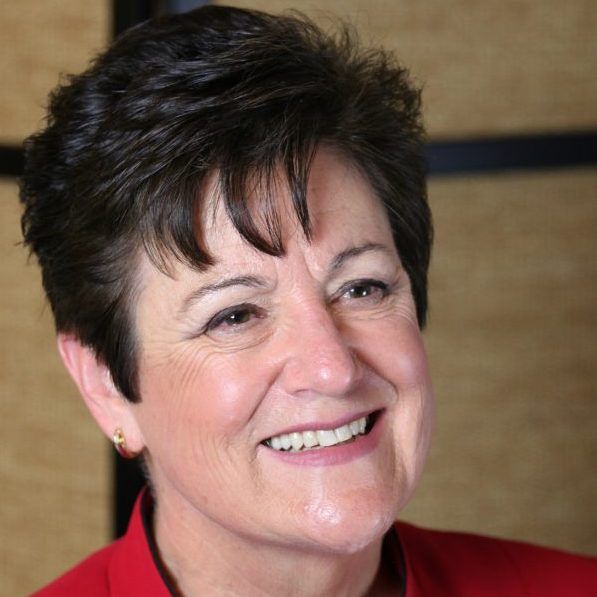
In early 2004, in a football game against the Dallas Cowboys, Philadelphia Eagles wide receiver Terrell Owens fractured his fibula, ripped the deltoid ligament from his tibia, sprained his ankle, and "shredded" his interosseous ligament. Post-surgery he was told by his surgeon that there was no chance he would be able to play in the upcoming Super Bowl and he might never play again.
Not only did Owens play in that Super Bowl, he made nine catches totalling 122 yards and went on to play pro football for another eight years.
How was this possible? He called Carolyn McMakin.
A clinical researcher, lecturer and author as well as a chiropractor, McMakin got involved with frequency-specific microcurrent (FSM) technology after friend and fellow chiropractor, George Douglas, DC, inherited a two-channel current-producing machine built in 1922 and a 1920s-era frequency list when he bought an osteopathic practice from Harry Van Gelder in 1983. The machine and the list of frequencies languished in a drawer until Douglas stumbled upon them years later.
"At that point we had a two-channel analog microcurrent machine," says McMakin. "He looked at the list and said, 'You know, Harry's old machine had two channels. I wonder if these frequencies would work on this microcurrent machine?' I said, 'I don't know. Let's try it.' So, we started treating each other, and nothing bad happened."
"That's the wonderful thing about FSM. Once you have a tool that lets you do this stuff, a whole world of possibilities opens up."
By 1996, she started treating patients. And by the end of that year, McMakin was doing "impossible" things with chronic pain patients, alleviating nerve and muscle pain, and treating patients with fibromyalgia, myofascial pain and chronic fatigue that nobody and nothing else could fix.

She was finding repeatedly the same thing. Patients, who had been suffering from chronic pain levels for over 12 years, walking in at an average of seven, and an hour later leaving pain-free.
But McMakin knew she couldn’t rely on objective results alone – she needed scientific results to back this up.
In the blood
McMakin sent blood samples she had collected to a laboratory to see if there were differences pre and post her treatments. The samples showed major changes in levels of cytokines, small proteins produced by white blood cells that drive inflammation, including interleukin (IL)-1, IL-6, IL-8 and tumor necrosis factor-alpha (which is produced during acute inflammation); CGRP, a molecule involved in pain transmission and the dilation of blood vessels; the neurotransmitters serotonin and substance P, which is involved in inflammation and pain sensation; and the anti-inflammatory hormone cortisol.
"Every pain specialist knows that substance P is produced in the spinal cord and that huge changes in substance P could only mean that the treatment did indeed affect spinal cord function," says McMakin. "The dramatic reductions in inflammatory cytokines mean that the treatment reduced inflammation, and the huge increases in serotonin and cortisol had to be the explanation for the induced euphoria."
Healing within minutes
So far, studies have shown that FSM therapy can:
A world of possibilities
McMakin says that treating a patient with microcurrents is actually the easy part of her work. Knowing what she needs to treat is the trick. She can't always go by the medical diagnosis that a patient walks in with, because diagnoses are often incorrect.
By way of example she describes a 70-year-old woman who claimed she had chronic fatigue syndrome—specifically a diagnosis of myalgic encephalomyelitis (ME), given at age 40 after the birth of her seventh child.
"She experienced right arm pain such that she couldn't lift the child, along with horrible body pain and weakness in her arms—a painful condition that continued, unrelenting, for 30 years," says McMakin.
"I asked her, 'Do you get sore throats, fevers or swollen glands?' She said no to all three. So I said, 'Then why did they diagnose you with ME?' And she said, 'I don't know.'" McMakin suspected she had fibromyalgia, not ME, and treated her accordingly. An hour later the woman was pain-free.
"We did one more treatment on her and that was it," says McMakin. "It wasn't hard. But the diagnosis was wrong. Nobody treated her correctly because ME is considered incurable. Which means nobody stopped to consider other possibilities. And that's the wonderful thing about FSM. Once you have a tool that lets you do this stuff, a whole world of possibilities opens up."
References
1 J Altern Complement Med, 2013; 19: 170-7
2 Top Clin Chiro, 1998; 5: 29 21, 2003
3 Proceedings of John Bowswick Burn and Wound Symposium, Maui, HI, 2003
4 J Bodyw Mov Ther, 2005; 9: 169-76
5 J Bodyw Mov Ther, 2010; 14: 272-9
6 Clin Ophthalmol, 2015; 9: 2345-53

